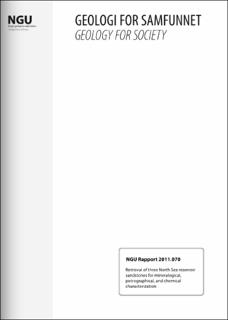| dc.contributor.author | Sæther, O.M. | |
| dc.date.accessioned | 2020-07-15T07:31:20Z | |
| dc.date.available | 2020-07-15T07:31:20Z | |
| dc.date.issued | 2011 | |
| dc.identifier.issn | 0800-3416 | |
| dc.identifier.uri | https://hdl.handle.net/11250/2664553 | |
| dc.description.abstract | The steady increase in concentration of CO2 in the atmosphere owing to combustion of hydrocarbons is considered a major factor contributing to global warming. Storage of CO2 as subcritical gas in depleted oil and gas reservoirs and deep aquifers is considered a viable mitigation for reducing the impact of global temperature increase as a consequence of increased atmospheric CO2 (Hitcheon 1999, Bachu 2008).More knowledge is needed to be able to assess:- the quantity of CO2 trapped as minerals during CO2 storage- the amounts of major and trace elements which might be mobilized as ions during CO2 storage, and- how the mechanical strength of different reservoir rocks might be affected during storage of CO2. | |
| dc.language.iso | eng | |
| dc.relation.ispartofseries | NGU-Rapport (2011.070) | |
| dc.rights | Navngivelse 4.0 Internasjonal | |
| dc.rights.uri | http://creativecommons.org/licenses/by/4.0/deed.no | |
| dc.subject | SANDSTEIN | |
| dc.subject | MINERALOGI | |
| dc.subject | MARINGEOLOGI | |
| dc.subject | KJERNEPRØVE | |
| dc.subject | PETROGRAFI | |
| dc.subject | GEOKJEMI | |
| dc.title | Retrieval of three North Sea reservoir sandstones for mineralogical, petrographical and chemical characterization | |
| dc.type | Report | |
| dc.description.localcode | 66456 | |
| dc.source.pagenumber | 27 | |
| dc.relation.project | (332300) Storage behaviour of CO2 (BIGCCS) | |

